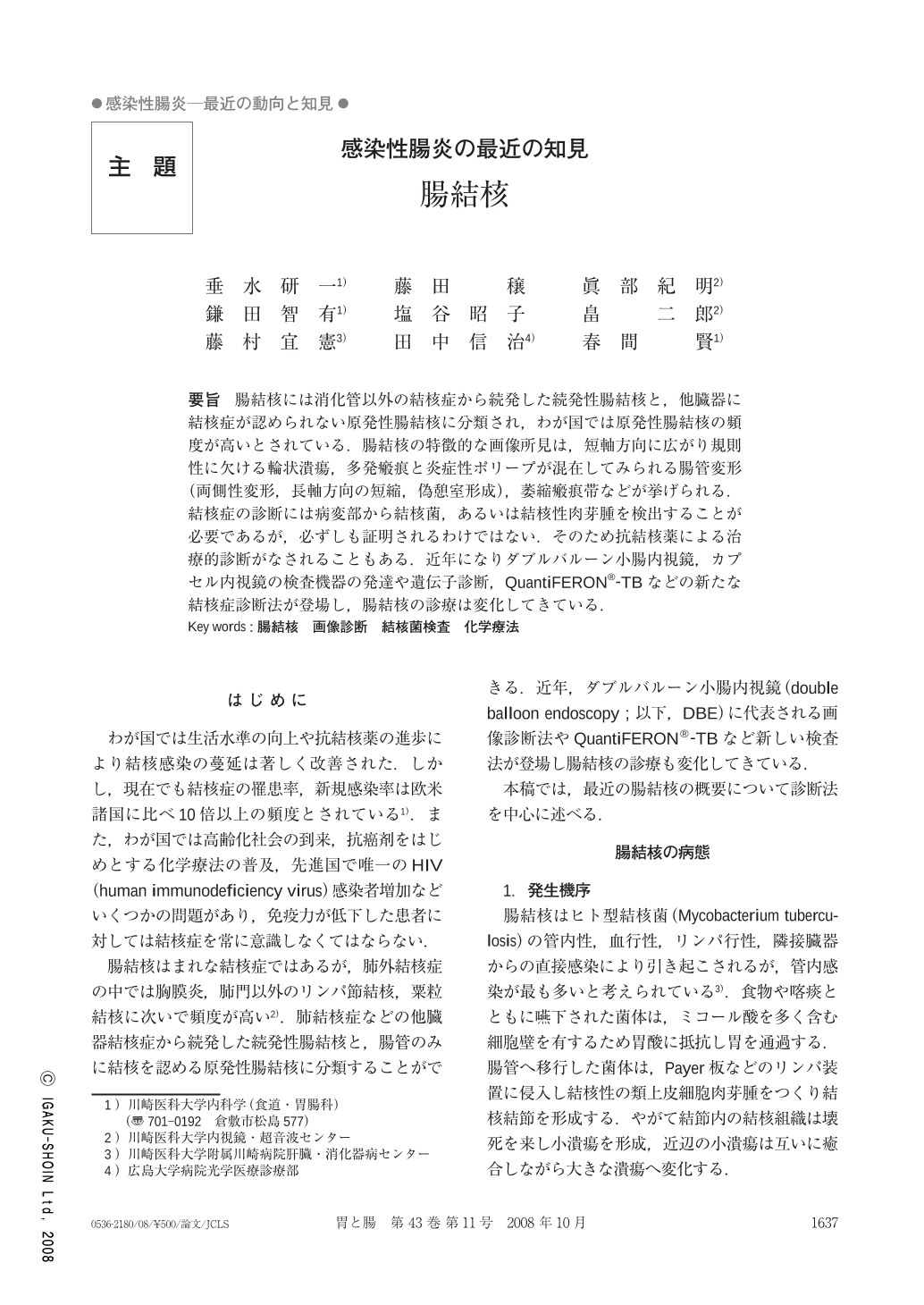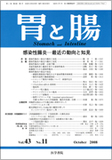Japanese
English
- 有料閲覧
- Abstract 文献概要
- 1ページ目 Look Inside
- 参考文献 Reference
- サイト内被引用 Cited by
要旨 腸結核には消化管以外の結核症から続発した続発性腸結核と,他臓器に結核症が認められない原発性腸結核に分類され,わが国では原発性腸結核の頻度が高いとされている.腸結核の特徴的な画像所見は,短軸方向に広がり規則性に欠ける輪状潰瘍,多発瘢痕と炎症性ポリープが混在してみられる腸管変形(両側性変形,長軸方向の短縮,偽憩室形成),萎縮瘢痕帯などが挙げられる.結核症の診断には病変部から結核菌,あるいは結核性肉芽腫を検出することが必要であるが,必ずしも証明されるわけではない.そのため抗結核薬による治療的診断がなされることもある.近年になりダブルバルーン小腸内視鏡,カプセル内視鏡の検査機器の発達や遺伝子診断,QuantiFERON®-TBなどの新たな結核症診断法が登場し,腸結核の診療は変化してきている.
There are two main subtypes of intestinal tuberculosis : primary intestinal tuberculosis, which develops only in the gastrointestinal tract; and secondary intestinal tuberculosis, which originates in tissues other than the gastrointestinal tract. Primary intestinal tuberculosis is more common in Japan. Intestinal tuberculosis has a number of characteristic features on endoscopic examination, including a circular ulcer spreading irregularly along the short axis, intestinal deformity mixed with multiple scars, inflammatory polyps(bilateral deformity, shortened long axis, formation of pseudo-diverticulum), and an atrophic scar zone. Diagnosis requires detection of Mycobacterium tuberculosis or tuberculosis granuloma in the lesions. However, this can be difficult to confirm. Therefore, patients are occasionally given antituberculous drugs as diagnostic treatment. Recent new techniques, such as double balloon enteroscopy, capsule endoscopy, genetic diagnosis, and QuantiFERON®-TB, have been shown to be advantageous for both diagnosis and clinical care of patients with intestinal tuberculosis.

Copyright © 2008, Igaku-Shoin Ltd. All rights reserved.


